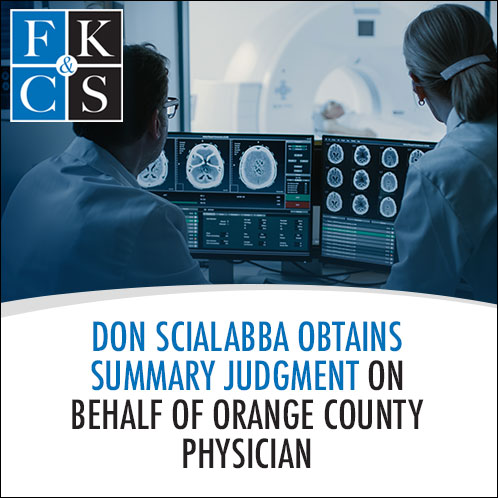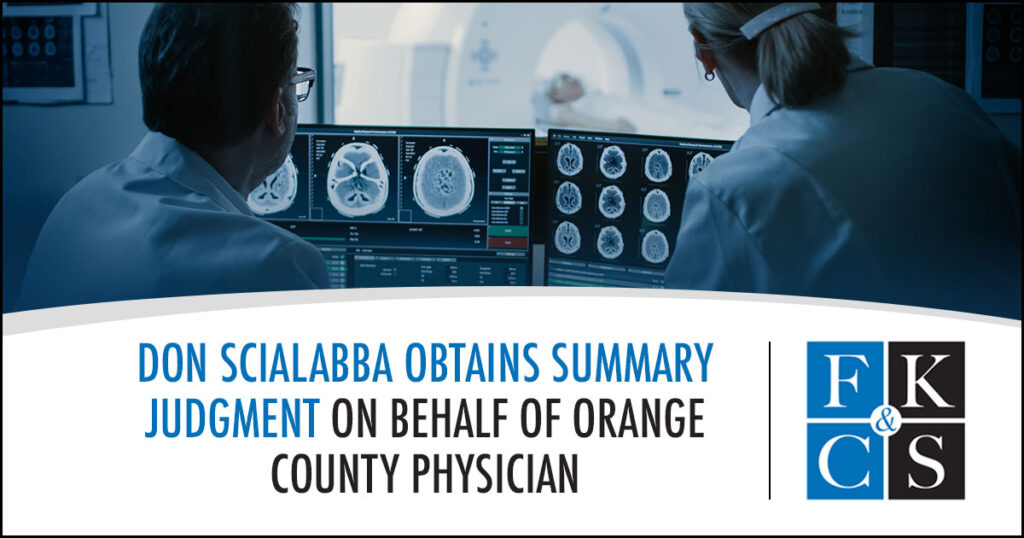 In March 2016, the plaintiff, a 56-year-old man with a long history of smoking, underwent an electron beam tomography (EBT) study during an annual physical for his job. The report included, “Questionable low density left upper lobe nodule.” It recommended a follow-up with a computerized tomography (CT) scan of the chest and a pulmonary consult.
In March 2016, the plaintiff, a 56-year-old man with a long history of smoking, underwent an electron beam tomography (EBT) study during an annual physical for his job. The report included, “Questionable low density left upper lobe nodule.” It recommended a follow-up with a computerized tomography (CT) scan of the chest and a pulmonary consult.
The plaintiff went to Feldman, Kleidman, Collins & Sappe LLP’s (FKC&S) physician client on May 7, 2016 for a follow up. He ordered a CT of the chest, but not a pulmonary consult at that time because the plaintiff was not exhibiting any pulmonary symptoms. Further work-up, if any, would depend upon the results of the CT, which is the “gold standard” for evaluating chest nodules.
The CT was performed on June 10, 2016. The report from the radiologist did not include anything suspicious indicating cancer, only emphysematous changes with thickening of a bulla in the left upper lobe, a sub-centimeter nodule in the right lower lobe and minute nodules in the left major fissure – the largest of which was 3 millimeters. Since the CT did not indicate cancer and the plaintiff was still not exhibiting any pulmonary symptoms, FKC&S’s client determined that no further work-up was needed at that time, and he would monitor the plaintiff’s condition.
Thirteen weeks later, on August 31, 2016, the plaintiff went to urgent care with a one-week history of shortness of breath. Another CT of the chest was performed, which was reported by a different radiologist, and showed that there was a suspicious nodule in the left upper lobe. When this study was compared to the June 10, 2016 CT by the second radiologist, it was noted that the nodule was visible in the June 10th study, but it had remained stable.
The plaintiff’s expert claimed that FKC&S’s client departed from the standard of care by not ordering a pulmonary consult as recommended in the March CT report, and by not questioning the report of the June 10th CT, which failed to identify the left upper lung nodule. The court found that FKC&S’s client was justified in relying on the June 10th CT report that there was no suspicion of cancer, as the plaintiff’s expert did not dispute that a CT of the chest is the “gold standard” for evaluating lung nodules, and the CT report described the nodule as “questionable.”
Also, the court found that FKC&S’s client did not depart from the standard of care by not ordering a pulmonary consult based on the results of the June 10th CT of the chest, and the plaintiff’s expert’s failure to dispute the lack of need for further work-up in the absence of any pulmonary symptoms. The court also noted that the plaintiff’s expert failed to establish that FKC&S’s client’s treatment was the proximate cause of any injury sustained by the plaintiff, as the expert did not dispute that the nodule had not changed in any way between June 10, 2016 and August 31, 2016. Since the nodule was stable and unchanged between the two CT exams, making the diagnosis in late August rather than June to be of no moment.

